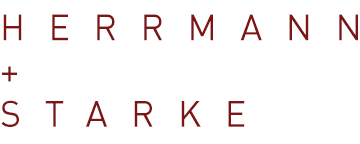EXERCISES
THE BRAIN DUMP
The Brain Dump helps you improve productivity and make better decisions by getting everything on your mind out of your head and into black & white so you can organize it, prioritize it and start working through it. Inspired by David Allen’s Getting Things Done book, my version has a somewhat different emphasis and does not require you to adopt the entire GTD™ system to use it effectively.
Step 1:
Create a master list of everything – literally everything – that’s on your mind for both your business and your personal life. You can use sheets of paper but it will probably be more valuable if you build it on a computer. This list should include but not be limited to:
Things you need to do for clients
Things you need to do to get clients
Workflow improvements you need to implement
Projects you’ve started but haven’t finished
Projects you haven’t started yet
Ideas you need or want to research
Commitments or promises you’ve made to others
Things you’re waiting for others to get back to you about
Upcoming events you need to prepare for
Upcoming trips you need to plan or pack for
Repairs, renovations, organization, decoration or other changes to your physical environment you need or want to make
Purchases you need to research, save for or make
Errands you need to run
Things you’ve always wanted to do but never started
Classes, tutorials or training you need or want
Books, articles, websites or blogs you’ve always wanted to read but haven’t made time for
Anything else, personal or professional, that’s on your mind
Step 2:
Review your list and ask yourself the following:
What can I delegate or out-resource?
What can I eliminate from this list?
What can I put off for at least 6 months?
What can I put off indefinitely?
Make these assessments in terms of what’s going to move your business forward (and make you more money) and what’s going to give you greater satisfaction. Make sure you strike a balance between these two goals that you can live with long term.
Once you’ve decided to eliminate or put off an item, that’s it – stop thinking about it and focus on the stuff that’s still a priority.
Step 3:
For each item that’s left on your list, ask yourself:
Why am I doing this or how is this going to help me?
What does a successful outcome look like or how will I know when it’s done?
What do I have to do to move this forward? Break each item down into bite-sized steps. Ideally each step can be completed in less than 2 hours (you can schedule multiple 2 hour sessions to deal with larger projects). Make each step as concrete as possible – they should all start with a verb (call, e-mail, meet, schedule, read, research, decide, gather, buy, etc.). This is a good point to take care of getting stuff delegated and out-resourced, too.
Steps 1 – 3 alone can be incredibly enlightening and empowering. If you want to take the exercise further, make a commitment to Steps 4 and 5:
Step 4:
Get time-sensitive tasks into a calendar and everything else into a task management system. Train yourself to maintain these tools so you’re not building all that brain clutter back up. Refer to them every day and use them to guide the decisions you make on how to spend your time.
Step 5:
When you fall off the wagon (and we all do), dust yourself off and get back on again.
Even if you’ve been following steps 4 and 5 religiously, do yourself a favor and repeat steps 1-3 at least once per year (I usually do it in December as a way of preparing myself for the New Year). Give yourself permission to start from scratch – reassess priorities, identify new items that can be put off or eliminated, and reevaluate the balance you’re striking between money-making and personally satisfying activities.
© HERRMANN + STARKE, 2010-2025. THIS WORK IS LICENSED UNDER A CREATIVE COMMONS ATTRIBUTION-NONCOMMERCIAL-NODERIVS 4.0 LICENSE.
SIMPLY PUT, YOU MAY SHARE THIS INFORMATION BUT YOU MAY NOT SELL IT OR MODIFY IT. YOU MUST ALSO DISTRIBUTE OUR COPYRIGHT NOTICE ABOVE WITH THE MATERIALS AND CITE 2GOODTHINGS.COM AS THE SOURCE OF THE INFORMATION. WE APPRECIATE YOUR UNDERSTANDING OF THE EFFORT REQUIRED TO PRODUCE THIS INTELLECTUAL PROPERTY AND OUR NEED TO PROTECT IT.


